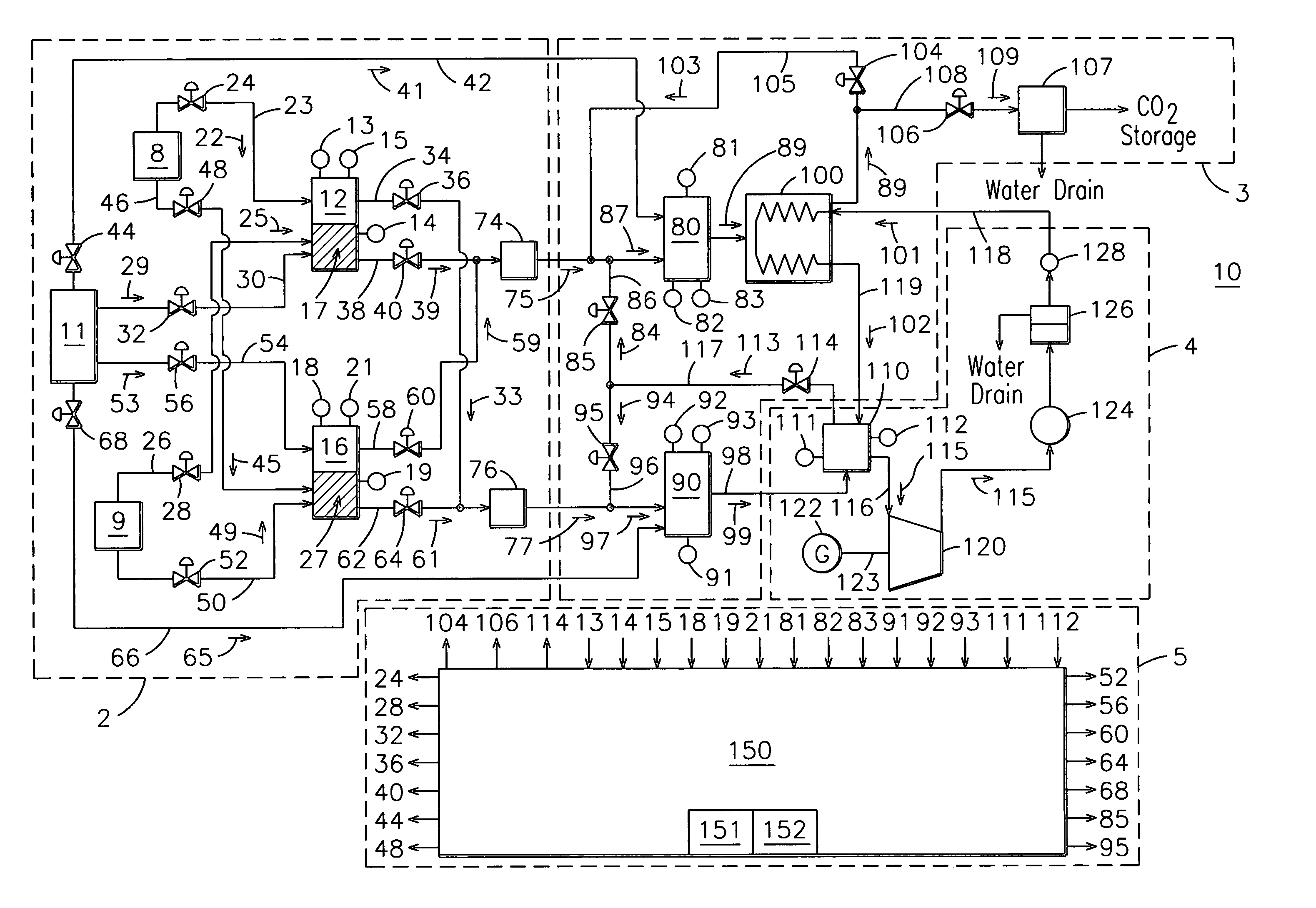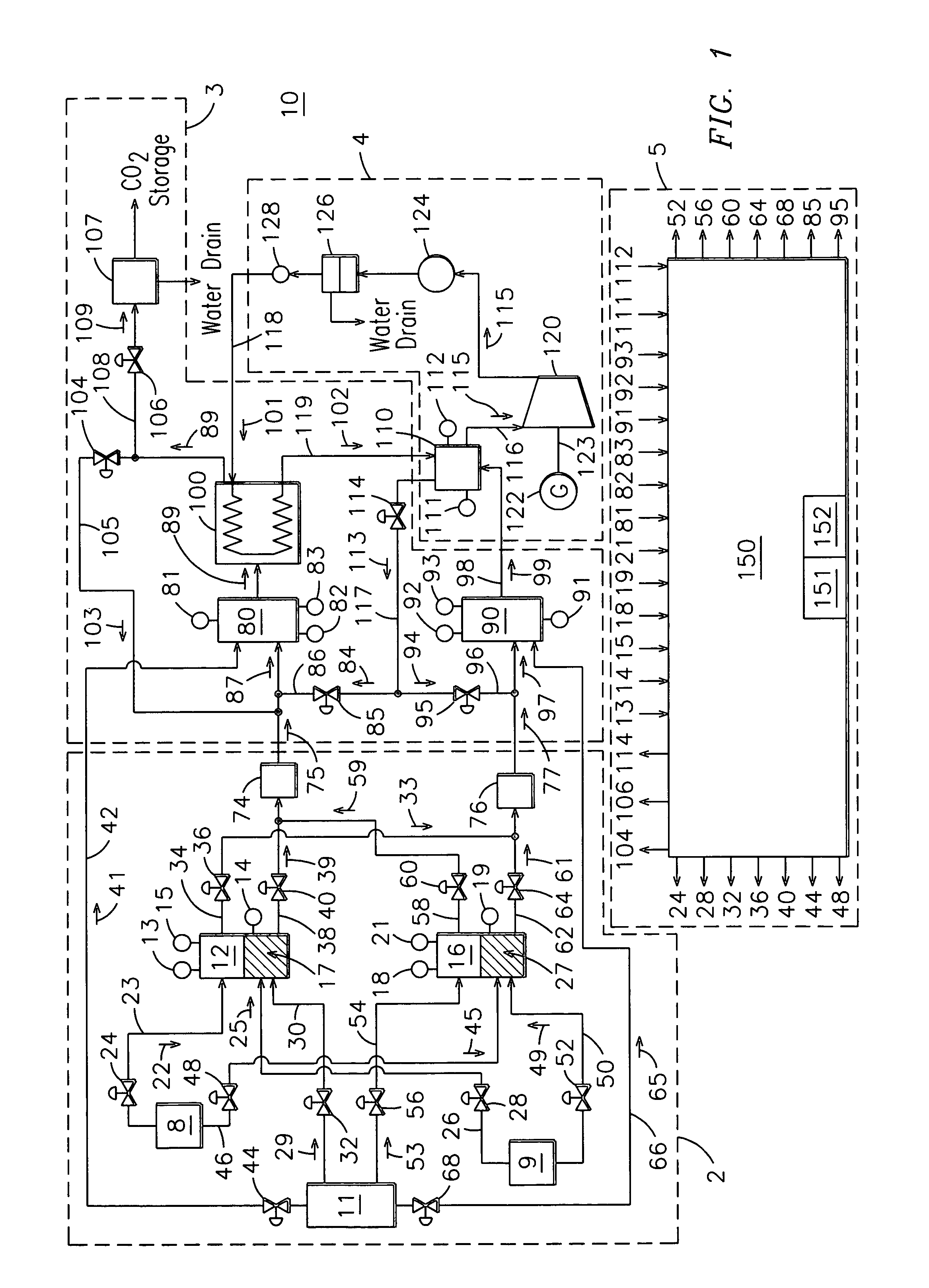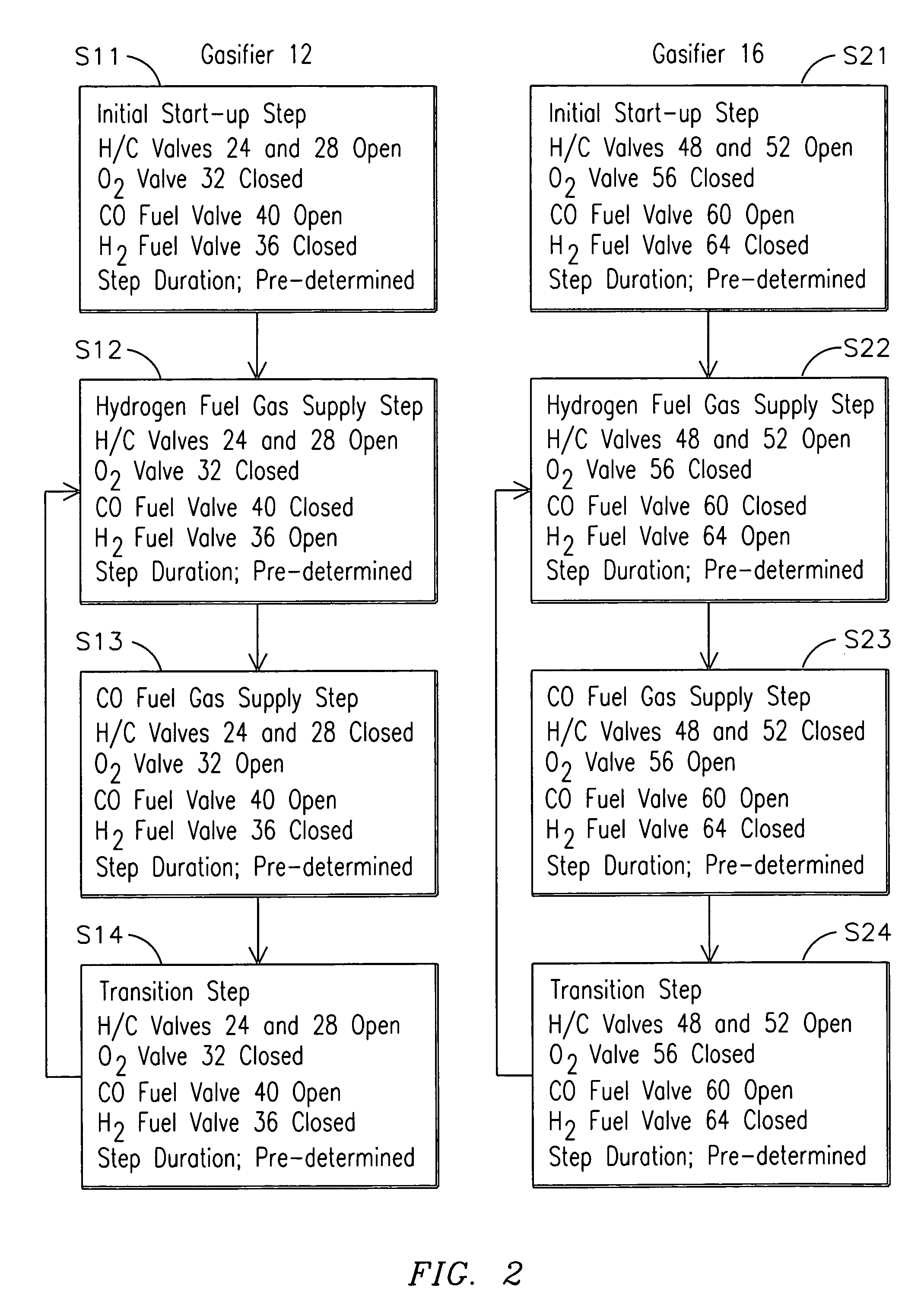System and method employing direct gasification for power generation
a technology of power generation and gasification process, applied in the direction of hot gas positive displacement engine plants, biofuels, machines/engines, etc., can solve the problems of increasing the cost of electricity by 2.5 cents to 4 cents per kwh, and thermal inefficiency in the overall gasification process
- Summary
- Abstract
- Description
- Claims
- Application Information
AI Technical Summary
Benefits of technology
Problems solved by technology
Method used
Image
Examples
Embodiment Construction
[0013]In the example embodiments now illustrated, a direct gasification process generates separate streams of H2 and CO from hydrocarbon material. The reactions take place in a melt of molten iron, although other materials, e.g., nickel, can be used in the reactor. Molten iron may be considered an ideal choice for the melt because it has a relatively high solubility for carbon.
[0014]In an exemplary process, a hydrocarbon feed is injected into the molten iron in the absence of an oxidant. The hydrocarbons breakdown, with free carbon atoms remaining dissolved in the melt. Simultaneously, as the hydrocarbons release carbon which remains in solution with the melt, hydrogen fuel gas is released from the melt. As the concentration of dissolved carbon in the melt increases, the solution, e.g., of molten iron and carbon, approaches a saturation level. At a point approaching the saturation level of carbon in the melt, the hydrocarbon feed to the melt is ceased and oxygen is injected into the...
PUM
 Login to View More
Login to View More Abstract
Description
Claims
Application Information
 Login to View More
Login to View More - R&D
- Intellectual Property
- Life Sciences
- Materials
- Tech Scout
- Unparalleled Data Quality
- Higher Quality Content
- 60% Fewer Hallucinations
Browse by: Latest US Patents, China's latest patents, Technical Efficacy Thesaurus, Application Domain, Technology Topic, Popular Technical Reports.
© 2025 PatSnap. All rights reserved.Legal|Privacy policy|Modern Slavery Act Transparency Statement|Sitemap|About US| Contact US: help@patsnap.com



